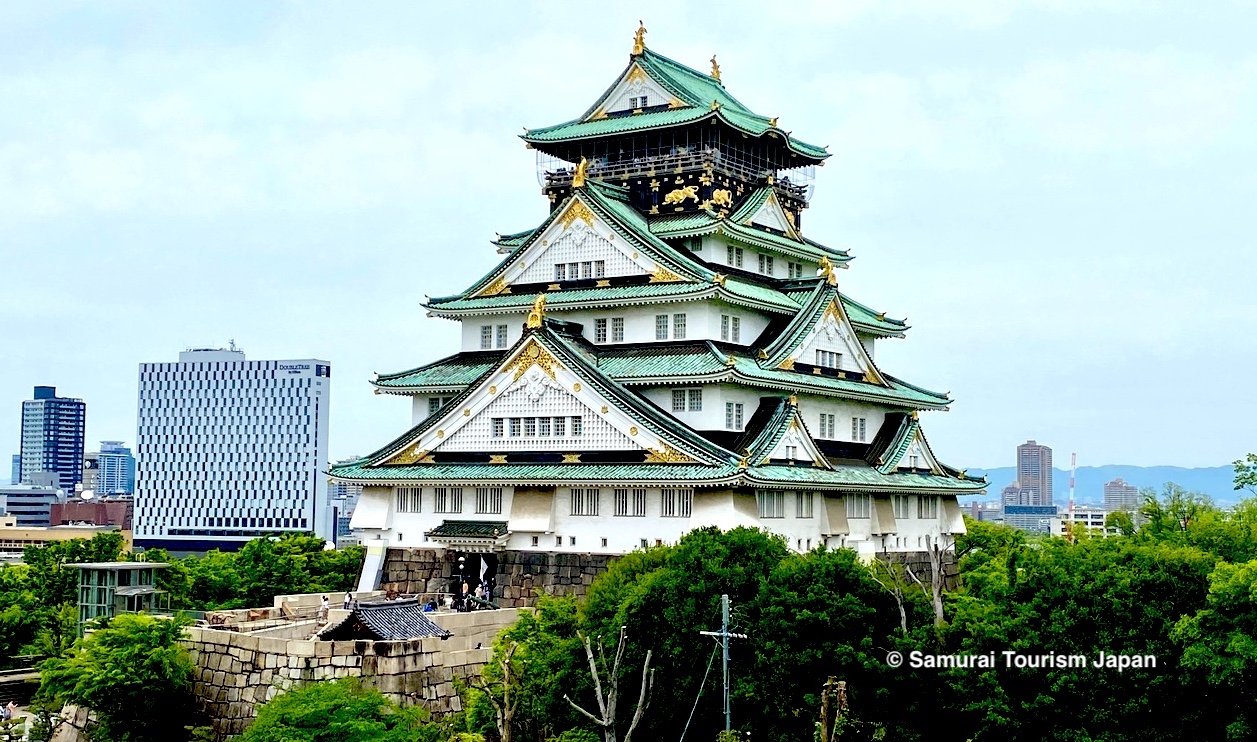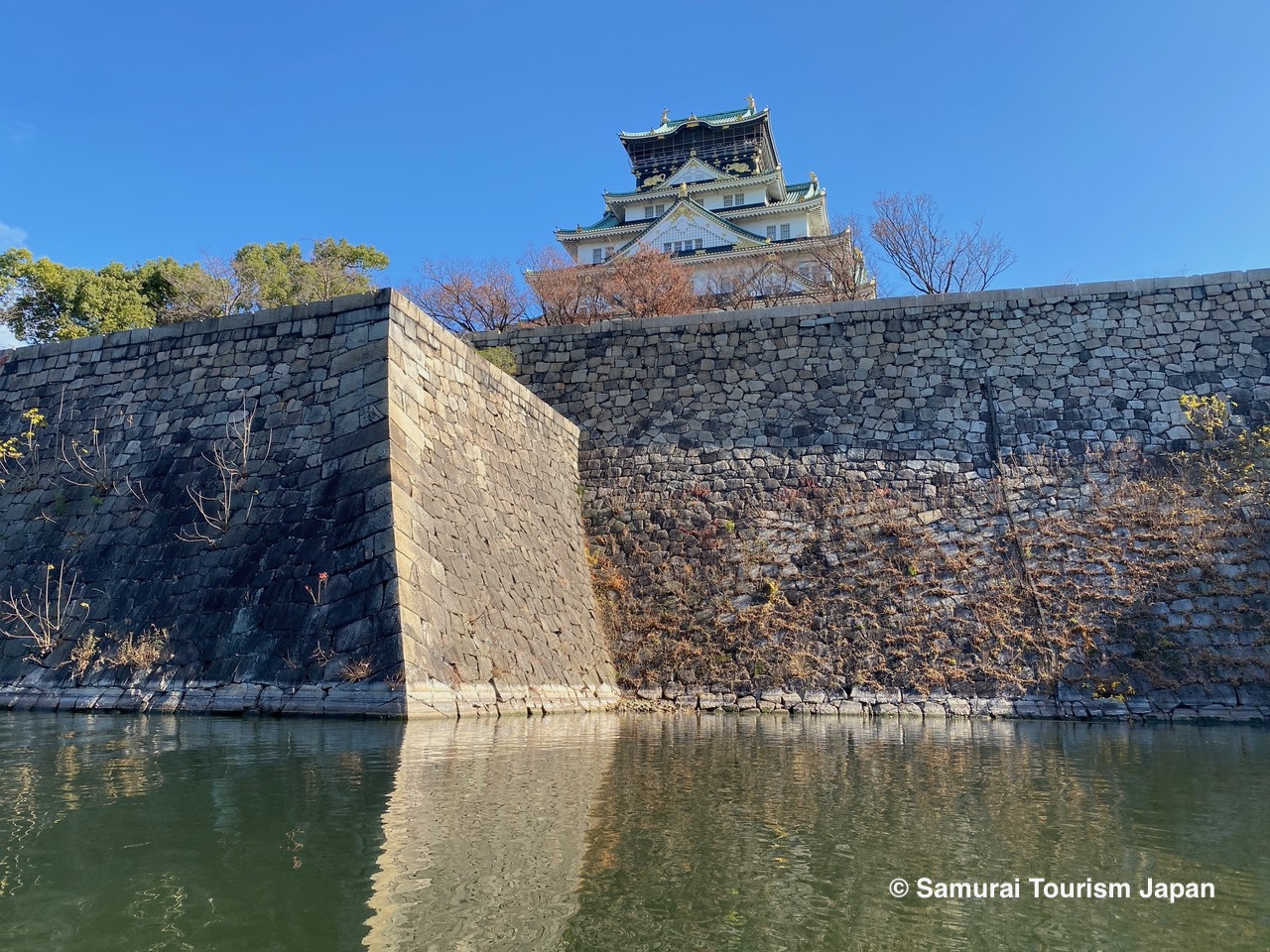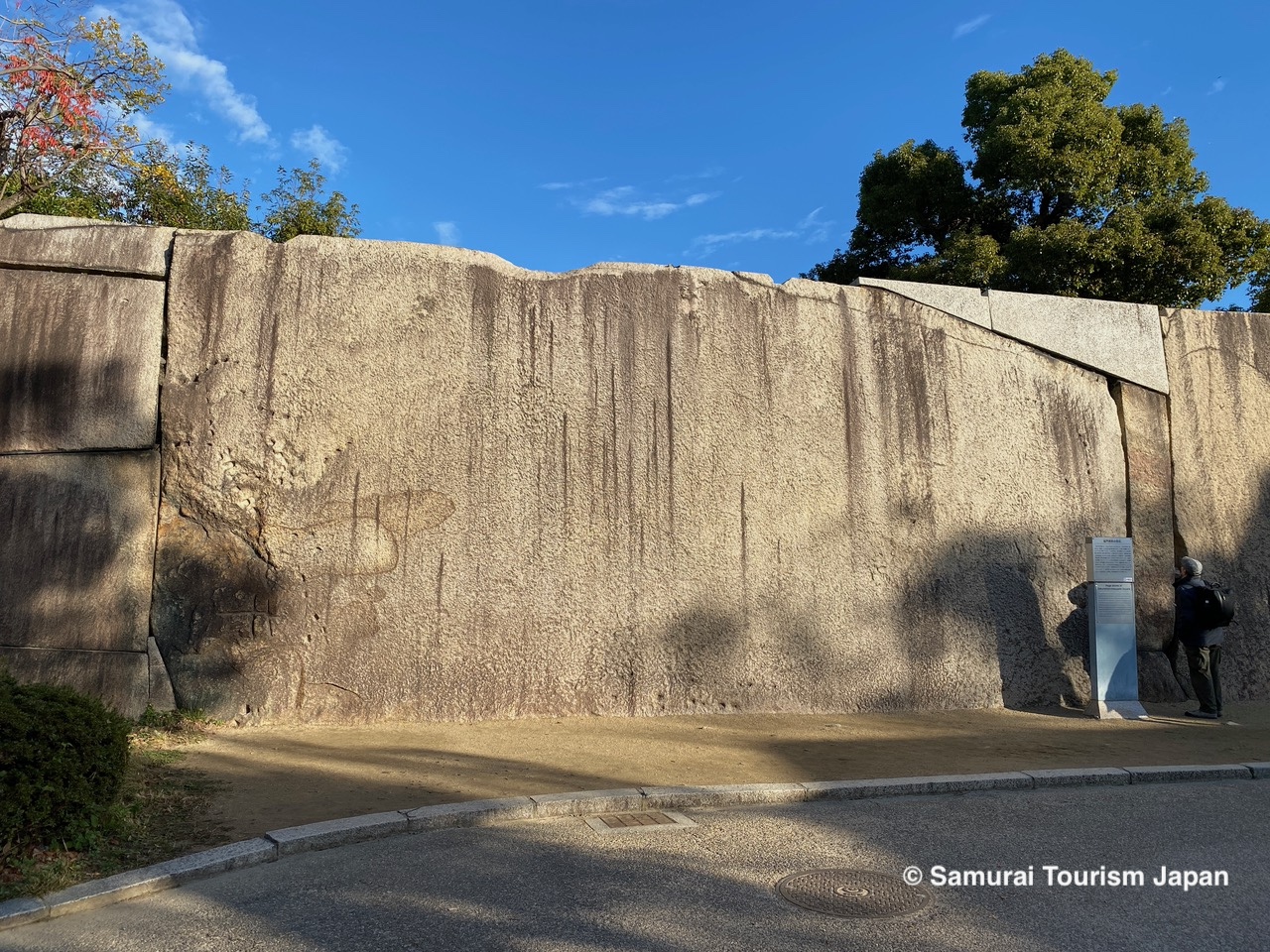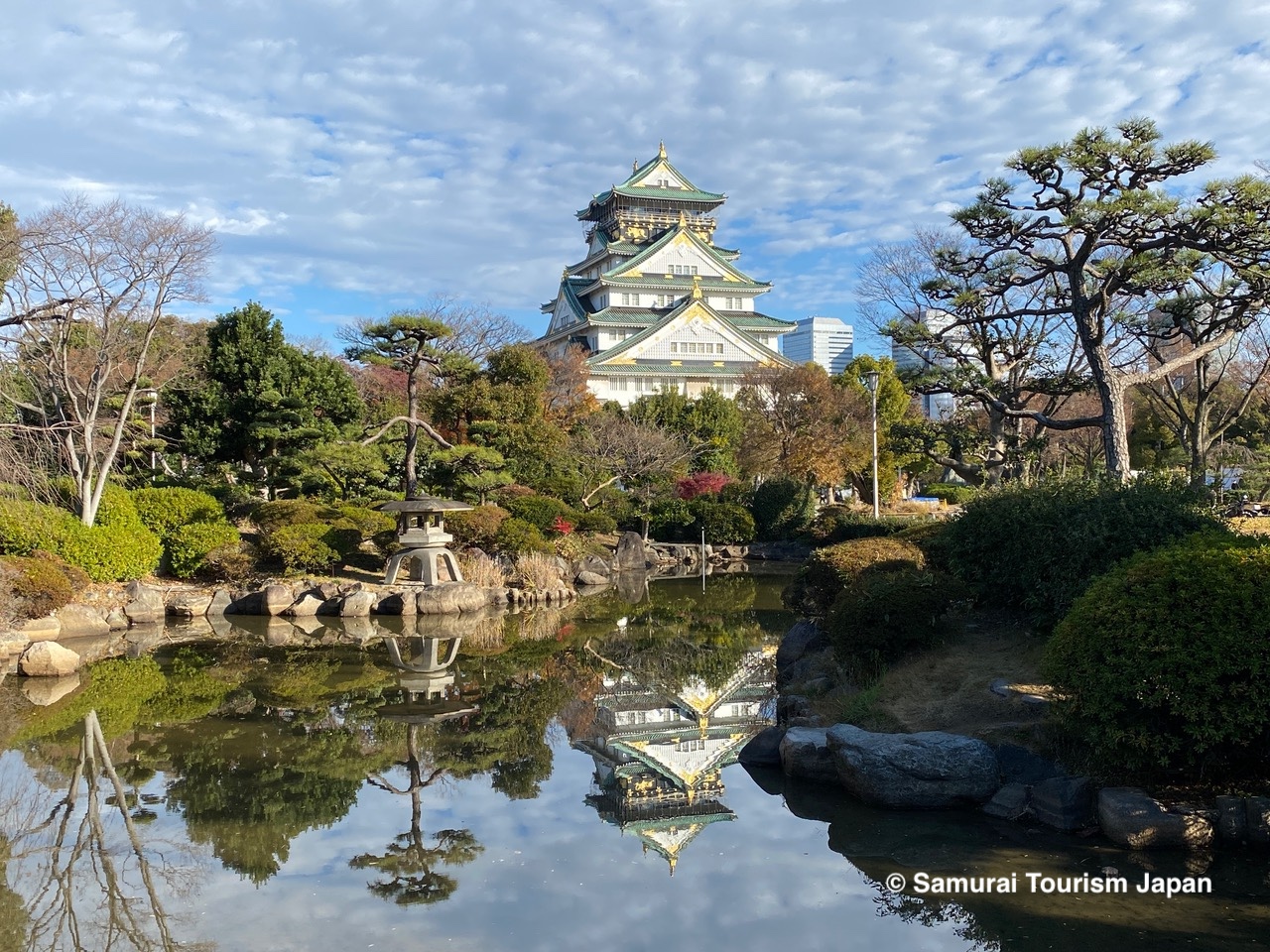Stories
Osaka Castle : Discover the stories of Osaka’s iconic samurai castle

Iconic Osaka Castle
Osaka Castle is one of the many icons of Osaka City, and was constructed in 1853 by Toyotomi Hideyoshi on the site of the Ishiyama Hongan-ji temple-fortress, the scene of a violent ten year battle in which Oda Nobunaga faced the warrior monks in the late 16th Century. Osaka Castle was modeled on Oda Nobunaga’s elegant Azuchi Castle, and like Azuchi, the original Osaka Castle tenshu (tower keep) featured five floors visible from the outside, but six floors within, and two underground basements. The scale of the keep was on a par with Azuchi, however the exterior was lacquered black, and decorated with large peony flowers, tigers, birds, the Kiri-mon, Kiku-mon and Tomoe-mon crests all rendered in gold.
Gold was used so lavishly on the exterior of Osaka Castle’s keep, it surpassed the grandeur of Azuchi Castle. The shachihoko, tiger-fish roof top ornamental devices, other decorative roofing and eve edge tiles were all finished in gold leaf. Inside, all pillars were lacquered red or black, and the walls were gorgeously decorated with more gold-leaf and paintings by the leading artists of the day. Hideyoshi often conducted tours of the luxurious keep to invited guest warlords, and these tours merely served to enhance his power and authority.
The castle’s total construction including dorui (earthen walls), mizubori(water moats) and karabori,(dry moats) covered an area of around two square kilometers.

Winter and Summer Siege of Osaka
Toyotomi Hideyoshi died not long after the magnificent fortress was completed, and his five-year old son, Hideyori inherited the castle and empire. A five member Council of Elders had been established to assist the child. The peace Hideyoshi had achieved through national subjugation was ripped apart when the most powerful daimyo and designated leader of those regents, Tokugawa Ieyasu made moves to assume power for himself. The nation was instantly torn in two —the Tokugawa led East and the Toyotomi loyal West — culminating in the Battle of Sekigaharain October of 1600.
The Tokugawa claimed victory, however, the nation was still not 100% in the hands of the Tokugawa. There were still a large number of daimyo loyal to the Toyotomi, a dangerous situation. Concerned at this, and wanting to see the end of the Toyotomi clan and peace before his own demise, Ieyasu launched the Winter Siege of Osaka in 1614. Although outnumbered two to one, the Toyotomi forces managed to hold off the attack, despite the Tokugawa having filled in the outer moat. The following year, in 1615, the Toyotomi were hurriedly gathering troops and repairing the outer moats. Alarmed, Tokugawa Ieyasu raised 150,000 samurai and again laid siege to Osaka Castle and the 60,000 samurai inside. During the Winter Siege of Osaka of 1614, famed general Sanada “Yukimura” Nobushige had built a vast defensive structure known as the Sanada-Maru, greatly strengthening the lightly protected southern end of Osaka.
This second siege saw two months of fierce fighting before the castle fell, destroyed by artillery shelling and fire. Thousands of samurai loyal to the Toyotomi were killed, and the Toyotomi clan perished. National power was fully in the hands of the Tokugawa.

Tokugawa Osaka Castle
In 1620, the Tokugawa clan rebuilt Osaka Castle, literally burying the Toyotomi castle so as to leave no trace of the Toyotomi clans’ fortress. The moats were dug wider and deeper than before, the ishigaki stone walls were re-configured to reach 30 meters in places, much higher than before, and the tenshu was repositioned and rebuilt about 45 meters west of the former keep. The new white tenshu was 1.5 times bigger than the Toyotomi’s tower keep, and a Sanju-yagura, a three-story watchtower was constructed alongside. This watchtower was partially destroyed when lightening struck a gunpowder warehouse in 1660 causing an explosion and fire. The main tenshu tower too was destroyed by fire five years later in 1665, when lightening struck the keep. Finally, the castle was attacked and remaining structures burned before surrendering to the Imperial forces during the Meiji Restoration of 1868.

The current tower, a ferro-concrete keep reconstructed in 1931 is an interesting mix of old and new, and of differing clan and colors. It was constructed based on the shape of the Toyotomi keep, but built in the white walled, green roofed design preferred by the Tokugawa clan, on the remaining stone base of the 1620’s reconstructed Tokugawa built Osaka Castle. Thirteen original Tokugawa period structures remain, and have been designated as Important Cultural Assets.
The great stone walls of Osaka Castle are worth noting, as they are one of the very few not to have been damaged by demolition, war or earthquake since being constructed in the 1620s. In particular Japan’s largest kagami-ishi stones, symbols of authority and power displayed within castle gate areas can be found at Osaka. The castles’ layout and remaining extant structures, the history and the culture of this fortress make it one of Japan’s most iconic castles.


